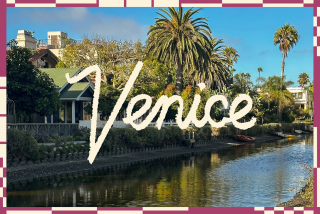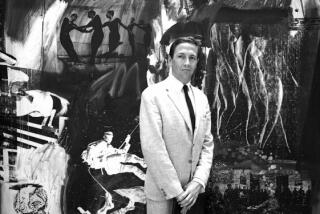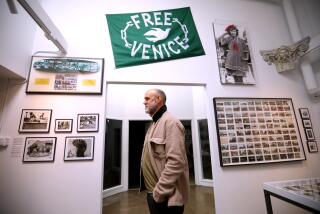Blessed serenity
- Share via
“Mark is at the heart of the matter.” As Iain Fenlon explains in “The Ceremonial City” (Yale University Press: 448 pp., $50), Venice, from its very beginning, cultivated a powerful story of its origins. St. Mark, the city’s chroniclers wrote, visited the region: That fable (and the arrival of his relics in 828) contributed to the city’s sense of its grand destiny as the “Queen of the Adriatic.” Its symbols? Scepter, crown, olive wreath and lion (the last in honor of St. Mark).
The book’s shimmering surface is matched by the depth of its insights. In this 20-year labor of love, Fenlon shows us how processions -- a doge’s funeral and official trionfi dedicated to the Holy Mother -- were spectacles with a purpose: ornate reminders to everyone of the social order. Survival required more than maritime power (which the Venetians certainly had); there had to be a rigidly enforced, visible sense of hierarchy, from the patrician-stamped coins in one’s pocket to the doge’s glittering throne. Citizens saw their city’s greatness in everything: Look no further than the large, looming figure of the Creator in Bonifacio de’ Pitati’s painting “God the Father Blessing Venice.” Did Venetians believe in a special providence? With God hovering over their entire society, how could they not?
-- Nick Owchar
More to Read
Sign up for The Wild
We’ll help you find the best places to hike, bike and run, as well as the perfect silent spots for meditation and yoga.
You may occasionally receive promotional content from the Los Angeles Times.






